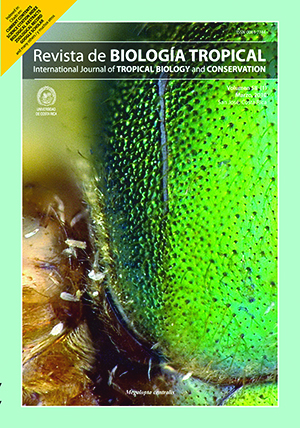Abstract
Five new fish species of the genus Hemibrycon are described from the Río Magdalena basin, Colombia, using morphometric, meristic and osteological characters. Hemibrycon paez (n=40) differs in number of lateral line scales (39 to 42 vs. 43 to 54), by the number of scales between lateral line and anal-fin origin (6 to 7 vs. 4 to 5) and between lateral line and dorsal-fin origin (6 to 7 vs. 8); H. quindos (n=66) distinguished from its congeners by one autopomorphy: Males with cartilaginous protuberance, rounded on the anal fin ray branched, along all rays (vs. cartilaginous protuberance not present on anal-fin rays in males), by the maxilla without a fold on its anterior end (vs. maxilla with folding only at posterior end), by the number of pored scales in the lateral line (35 to 40 vs. 40 to 46); H. raqueliae (n=117) distinguished by a widened first tooth on the maxilla with the remaining teeth decreasing sharply in size (vs. first tooth of maxilla slender, remaining teeth gradually diminishing), by the first maxilla tooth pentacuspid and wider than the others (vs. first tooth on maxilla unicuspid or tricuspid and of same size as the others); H. virolinica (n=34) distinguished by the posterior end of the extrascapular spine surpassing the postemporal (vs. posterior end of extrascapular not exceeding postemporal spine), by having the posterior end of the first proximal pteryigiophores of dorsal fin of the same size as the anterior edge (vs. the posterior end of the first proximal pteryigiophores of dorsal fin more elongated than the anterior edge); and H. yacopiae (n=78) is distinguished by the following autopomorphic characters: first laterosensorial infraorbitals canal in contact with the posterior end of antorbital (vs. laterosensorial canal not reaching posterior end of antorbital), by the tip of the supraoccipital spine widened (vs. supraoccipital spine acute), by the posterior end of ectopterygoids failing to come in contact with the quadrate bone (vs. in contact); by the posterior edge of palatine more widened than the anterior edge of ectopterygoids (vs. posterior edge of the palatine approximately the same size, except for H. paez).##plugins.facebook.comentarios##

This work is licensed under a Creative Commons Attribution 4.0 International License.
Copyright (c) 2010 Revista de Biología Tropical
Downloads
Download data is not yet available.






